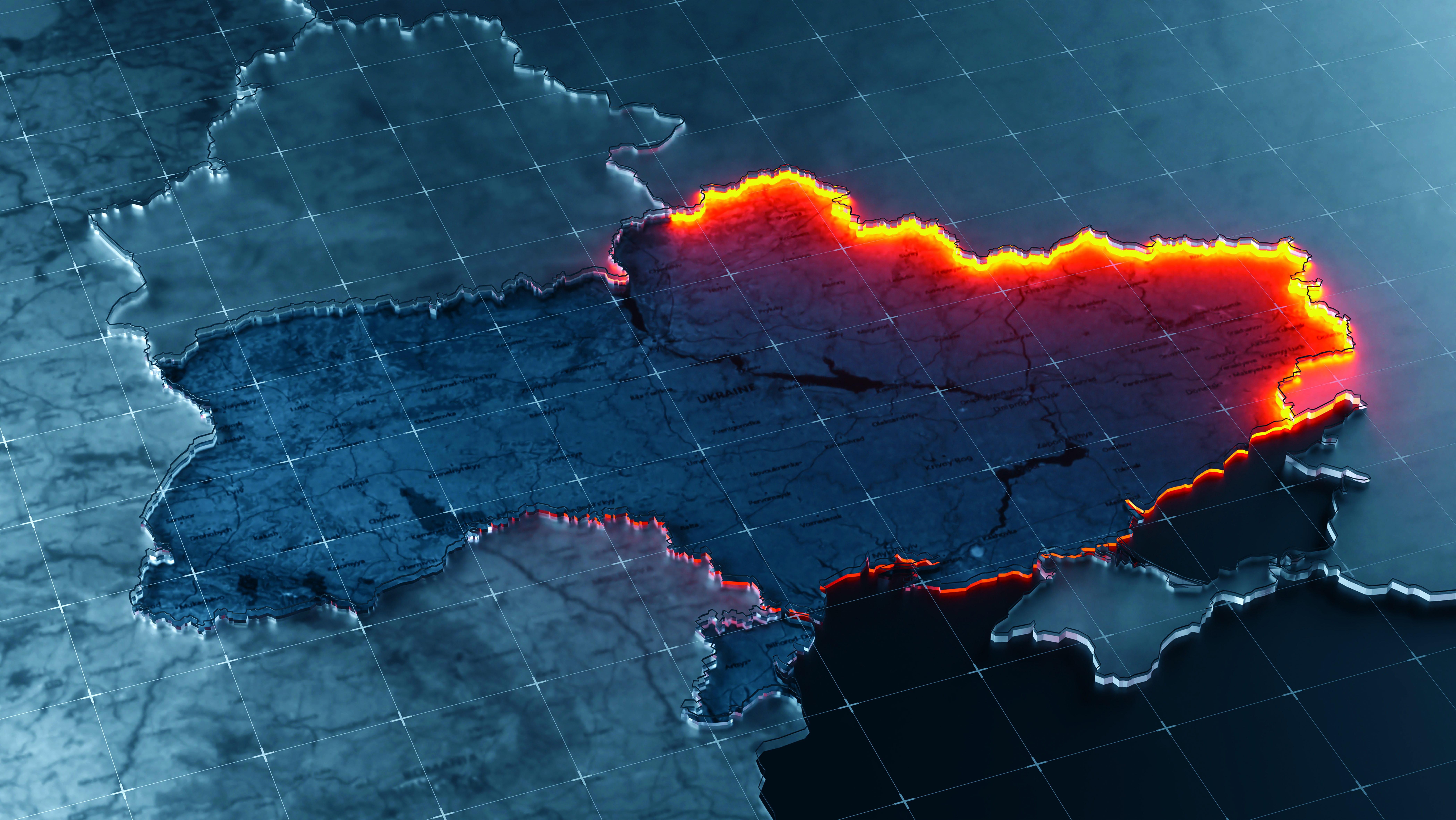Photo credit © Reuters
The Russian seizure of Crimea, and its nearby gas and oil fields, shocked Western Europe and the US. Subsequent ongoing violent political upheaval in Eastern Ukraine with parallel threat of Russian military intervention dramatically heightened attention of many governments.
Potential for violence that might disrupt energy transmission through Ukraine to Western Europe generated turbulence in global financial markets. The global price of oil edged up, at a time when most commercial users of oil and its byproducts had anticipated falling oil prices.
(Most commercials in June took short positions in world oil trading, leaving only smaller speculators and individual investors betting that prices would rise. The commercials assumed the political dynamics in Ukraine would calm down, whereas the speculators assumed fighting would grow and draw in Russia, Western Europe and the US.)
As violent events continued in East Ukraine, the US Government insisted that Russia was stimulating that violence, and led another US-European push to impose greater sanctions on both individual Russians and the Russian economy.
Officials in Washington and some European capitals failed to recognize that while Putin did want Crimea, he would not likely want to annex all of the Ukraine, or even Eastern Ukraine, because that would just bring the heavy debt burdens of the Ukraine onto Russian shoulders.
Instead, Putin had made clear from the outset that he wanted greater devolution of power from Kiev to local governments in a “federated” Ukraine.
The public argument was a need to protect ethnic Russians that constituted a significant share of residents in Eastern Ukraine. Putin’s underlying objective was clearly to weaken the central government and leave a politically fragmented, partially dysfunctional Ukraine as a strategic non-NATO buffer and reliable provider of food for Russia in the years ahead, regardless of Russian relations with the West. Putin also wanted “safe passage” for Russian security forces to access Transniestria in Moldova through Odessa (denying the West future security utilization of Odessa).
Even before violence spread, at the time of the fall of Yanukovych, Zbig Brzezinski suggested “Finlandization” (neutralization) of Ukraine might be the best option to reduce likelihood of confrontation Russia and the West.
As events have now developed, Ukraine looks likely to evolve into a looser federation with complex mixed economic and cultural relations with both Russia and Western Europe – in effect, Finlandized.
As a leader of Russia, Putin created circumstances that favored this outcome.
He successfully used threat of military force and groups of unofficial, unflagged special forces to generate fear among Ukrainians and crippling of the Ukraine central government and its military. Had he sent Russian forces formally across the border, he would have again faced a potential blowback from mothers of Russian boys killed in combat, as had happened in the past with regard to the conflict in Chechnya. It is highly doubtful that he was prepared for deaths of his Russian boys, and definitely not ready to confront US military responses that might have ended with humiliation for Putin.
As for Syria, Putin had already succeeded in redirecting US intervention, in the process causing Obama to appear to be backing down from the “red line” he had previously set.
Strategically, Putin kept Syria in play for the IRGC and its aid to Hamas and Hezbollah, while strengthening relations with the Tehran leadership.
When Iraq burst into flames as ISIS spread out and ignited broader Sunni-Shia and tribal conflicts inside Iraq, Riyadh and Tehran (and some diplomacy by the US) sought to stabilize Iraq, to avoid direct confrontation between the Saudis and Iran, which neither wanted at this moment in history.
Putin inserted himself by encouraging Iraq PM Maliki to stay strong at the very moment Riyadh and Tehran (and the US) wanted Maliki to step down, Putin inserted himself by encouraging Iraq PM Maliki to stay strong at the very moment Riyadh and Tehran (and the US) wanted Maliki to step down, allowing the formation of a new government, which would be more inclusive of Sunni interests.
Clearly, Putin saw opportunity in continued turmoil in Iraq, drawing in greater cooperation between Moscow and both Riyadh and Tehran.
In this complex process of responses to ISIS, the planned successful withdrawal of the US military from Iraq and Afghanistan were turned into what appeared to be a botched exit, after years of warfare and countless deaths.
All of this confusion and continuing violence, with Putin chalking up points of success, rattled leadership among some neighboring European countries, notably the Baltic States, Poland, Sweden and Finland.
Separately, Denmark (for Greenland), Norway, Sweden and Finland had grown increasingly concerned about future exploitation of the Arctic, particularly its energy and raw material resources. A slowly budding alliance among these countries with the US, Canada, and UK was forming with security concerns in mind when future confrontations with Russia might be expected.
The Northern European governments and Poland are increasingly worried about perceived Russian manipulation of events in its interaction with the US, and fear for the future security of their own region and interests.
Some NATO member governments became motivated to seek revitalization of NATO, but many other European NATO members showed great reluctance to rise to the occasion, both because economic and fiscal priorities lay elsewhere, and because they did not wish to disturb substantial, growing business relations with Russia.
Germany in particular had already allowed the once admired Bundeswehr to deteriorate into a dysfunctional, poorly armed militia, and was not politically ready to reconsider rebuilding a security presence in world affairs.
Instead, Germany had de facto already “pivoted to the East”, committing its industry and capital to enhanced relations with Russia, and across Russia to China.
For Germany, NATO had become an old boys club, pleasant to attend, but of no vital interest to Germany’s economic thrust Eastwards, away from a gradually deteriorating Eurozone neighborhood.
The US, of course, pleaded with NATO members to bring their defense spending up to NATO target levels, in light of what might be perceived as potentially growing hostility between Russia and the West. Bordering Russia, Estonia and Lithuania (a conduit to Kaliningrad), along with Poland argued vigorously for reenergizing NATO. Sweden, long politically averse to direct entanglement with NATO, began seeking ways to interact militarily with NATO.
All the while, Germany’s politics remained unchanged. When the US sought coordinated Western sanctions on Russia, divisions in NATO widened, bringing some benefit to Moscow but little to Washington.
Meanwhile, Chinese political and military leaders observed incremental moves by Putin bringing strategic gains to Russia through exploitation of Washington’s hesitance and conflicted political and diplomatic responses.
China pursued a string of limited “provocations” with neighboring governments, particularly Vietnam, Philippines, and Japan over disputed territorial rights. China also unilaterally introduced its new Air Defense Identification Zone (ADIZ) which was criticized by the US and Japan. Apart from a sortie of two US bombers into the ADIZ area, the ADIZ incremental step outward of China’s declared perimeter was soon forgotten by press, media, and Congress.
China made a temporary move of an oil exploration platform into waters in dispute between China and Vietnam, accompanied by conscious efforts to create “incidents” by attempted ramming of Vietnamese sea vessels. China proceeded to begin building an artificial island on reefs near the Philippines, over the objections of Manila, as both an operational and surveillance facility.
Strong PLA declarations about the China’s rights to the Senkakus generated apprehension in Tokyo, and the Japanese PM Abe urged President Obama to state that Washington would interpret aggression on the Senkakus as calling into effect the US-Japan mutual defense arrangements.
Clearly China does not want direct conflict with the US, but the PLA seems to see advantage in keeping alive a level of fear and hostility between the PLA and the Japanese Self Defense Forces (SDF).
China appears to have concluded that the US will tolerate Chinese bullying of neighbors if US military is not at risk, and Washington remains preoccupied with domestic politics.
While the Obama Administration is not noted for generating “strategic visions” of the US role in world affairs, the Department of Defense (DOD) and its military independently continue to analyze, trying to anticipate challenges that lie ahead in future years and decades. A recent DOD report on China’s PLA does warn of rapid expansion of Chinese military capabilities on land and sea, and in the air. However, DOD also recognizes that the PLA is not capable of direct conflict with the US military at this moment in history.
In this context, DOD analysts have concluded that the PLA seeks focus of its development efforts on preparing for, and winning short-duration, high intensity wars in regions close to China. DOD also believes Chinese, like Russians, are showing growing attention to means and tactics that would not trigger a full military response from the US.
A pattern is developing among some increasingly antagonistic nations of careful, but aggressive tactics to enlarge areas of influence, in a slow reconfiguration of global security zones. No doubt Iran and the GCC leadership must be learning from the chess-like incremental steps being played out by Russia and China. Markets, like well-intentioned politicians in many nations, are yet not awakened to where this all may lead.











